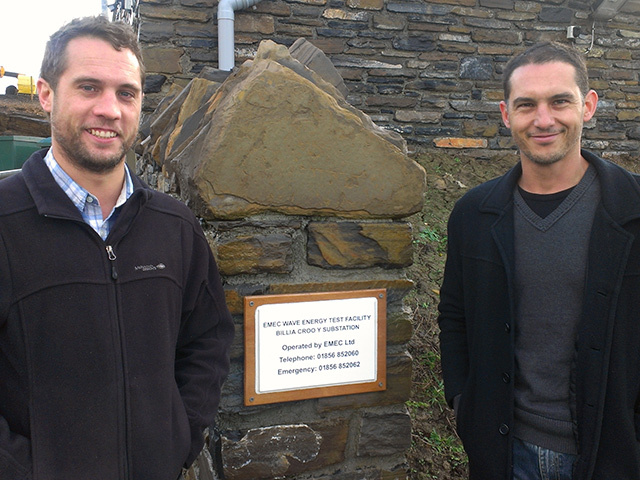
Just a few weeks ago, two West Australian brothers celebrated the success of their novel wave energy converter concept which was one of the winners in GE’s first Ecomagination ANZ Challenge.
Glen and Shawn Ryan received A$100,000 which is to be invested in the ongoing development of their device, which is based on a very simple principle . . . the foot pump.
The award also provides Bombora Wavepower the opportunity to develop its submission further with potential access to funding under the Challenges’ A$10million capital pledge which is made available by GE and its partners for investment in promising start-ups and ideas.
The Ryans have since set about raising up to A4million of private capital to help fund development and testing over the next two years, prior to seeking further capital to fund full-scale prototypes.
And mapped into their forward plans is a trial in Scottish waters. Glen Ryan told Energy that a dialogue has been established with Scottish Development International with a view to forging the relationships necessary for this to happen. The brothers visited the European Marine Energy Centre, Orkney, late last year.
The Bonbora converter is designed to function within the narrow margin between breakers and the beach in water depths ranging 4-15m. This is a highly dynamic, dangerous environment for any man-made engineering to survive in.
However, this device, which is designed for attaching to the seafloor, could prove especially suitable for the Pacific Ocean where myriad islands are surrounded by coral reefs and enjoy a regular surf pattern.
Glen Ryan told Energy: “Our device will be very well suited to the Pacific islands. It can be adapted to both low and high grade wave energy climates.
“It essentially becomes a techno-economic optimisation as to the size of the generator and convertor package that’s installed.
“We would love to initially market our product to these island communities because of the need and the extreme cost of energy; however, our current plan is to focus on grid-based systems close to where we establish our global operations. This allows us to learn and improve our product with minimal cost to intervene or modify. Once we can be assured of our device’s performance and reliability we can comfortably lower our warrantee provisions and then pursue these markets.”
The Bombora device uses a simple, low-impact and resilient design that is said to offer inherent survivability from storms as well as resilience to rogue waves while encouraging marine ecosystems and has potential shoreline protection and preservation.
“Bombora’s motivation for its WECD technology is to be cost competitive with onshore wind, currently the cheapest form of renewable electricity,” said Glen Ryan.
“There is huge potential for using this technology to reduce carbon emissions around the world. We can foresee significant economic benefits due to its large scale (1.5MW), near-shore location, performance and survivability benefits.
“Each unit could potentially supply up to 500 homes with renewable electricity each year (or the equivalent of taking 825 cars off the road).
“We are focusing on variable speed PTOs for optimal generation results and yield extraction for larger wave farm installations. For some of the more remote sites we can offer simpler systems that make it simpler and more economic for locals to maintain.
“Our device can also be used for powering desalination plants either coupled directly to the electrical output or by replacing/piggy backing off the electrical generator within the device.”
In essence, each arm of the Bombora machine contains a number of cells covered with a flexible membrane, separating the seawater from the air contained within the device and separating each cell from the others.
As waves pass over the device they push down on the membrane and sequentially compress the air within each cell. The air is allowed to flow from a cell through a valve to a central air loop or manifold, which takes the pressurised air from all of the cells to a central apex module.
It then flows through an air turbine and so powers an electric generator. The air is then returned back to the cells by another low pressure manifold and valves on each cell.
Glen Ryan pointed out that wave energy is an ever-present and significant source of renewable energy that has an immense and as yet untapped potential.
“The highest yielding global wave resources are concentrated on the west-facing coasts of most mid-latitude countries. The International Energy Agency (IEA – OES-IA) estimates that the equivalent of 10% of the world’s annual energy consumption is potentially available in wave power.
“Wave energy is predictable in its yield, up to three days in advance, is a persistent resource and will provide diversity of supply to other renewable energy supplies.”

